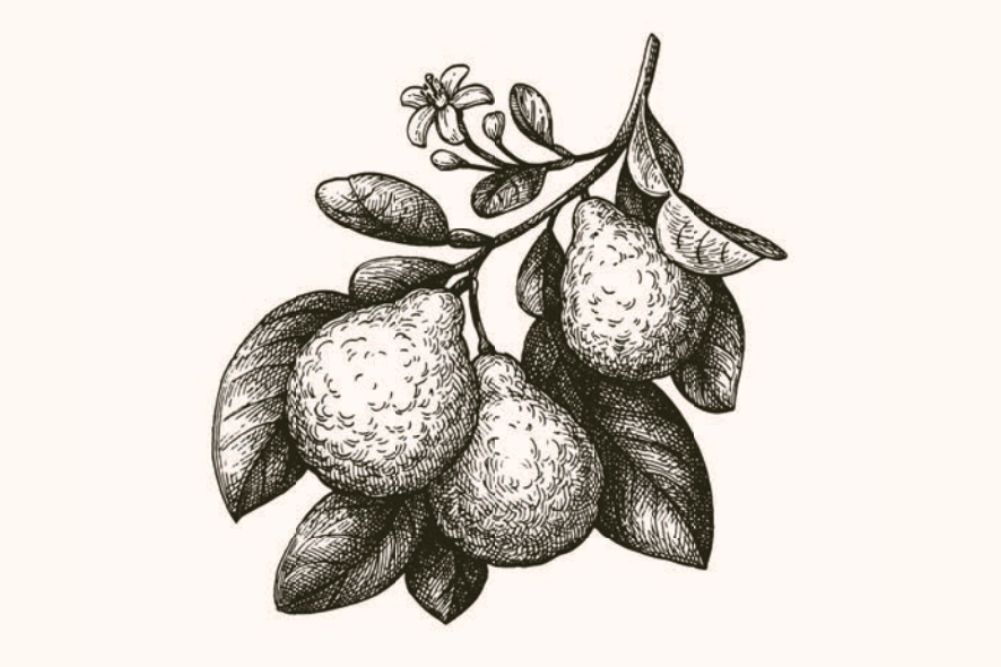Perfect potatoes
Potatoes are one of the cheapest and most convenient sources of vitamin C, potassium and fibre, especially if you also eat their nutritious skin. For people who tuck into huge mounds of chips daily, the potato is probably their main source of vitamin C. Sadly, however, there is no evidence that the humble spud has the aphrodisiac qualities attributed to it by Falstaff in Shakespeare’s The Merry Wives of Windsor.
It’s thought that the potato has grown in the Peruvian Andes for more than six millennia. Not to be confused with the sweet potato (Impomoea batatas) from the Caribbean, which gives the potato its name, the potato (Solanum tuberosum) was taken to Europe by the Spanish in the early 16th century. The legend that Sir Walter Raleigh took the potato from Virginia to his Irish estates in around 1585 is flawed by the fact that there were no potatoes in Virginia until the 18th century.
The earliest hard evidence of potato cultivation in Ireland (where the potato thrived in the wet climate) dates from 1640. The Irish became so dependent on the potato that a million of them died in 1846 when blight caused crop failure. The truth of this tragedy is that potatoes are so nourishing that it’s possible to live quite healthily on an almost exclusive diet of them — until supply is cut.
Once the potato began to spread across the world there was no stopping it, as different varieties evolved or were bred and it could be grown in almost any climate or soil. Today the world grows enough potatoes annually to cover a four-lane motorway circling the globe six times.
Although the potato has travelled a long way from the confines of its South American origins, it hasn’t always been cordially received. When spuds first arrived in Europe they were initially denounced by religious leaders on the grounds that they must be devilish imports because they were not mentioned in the Bible.
There was disquiet, too, in the notion that because the potato grows underground and is dirty, it must be, in some obscure way, nasty or born of blackness and evil. Not that this seemed to be a problem for the French, who rather charmingly named the potato ‘pomme de terre’ or ‘apple of the earth’. However, in some parts of Europe (especially in England) the potato came to be associated with poverty by the wealthy classes, who tended to feed themselves on an unadulterated diet of meat.
Today the potato is one of the most delicious, versatile and healthy foods at our disposal. It has become so much more than just a side vegetable accompanying other foods. Lightly salted or rubbed in oil, put into the oven whole in their skins and served as ‘jacket potatoes’ (or ‘baked taties’, as the Scots call them) with a whole range of fillings, potatoes become a gourmet main meal in their own right.
Creamy mashed potatoes can be used in all sorts of baked pies or as a thickener for sauces. Use low-fat yoghurt to achieve the creaminess without the calories. You don’t need to peel the spuds if you mash them finely with an electric masher. If you spread mashed potato thickly on the base and up the sides of a flan dish, brush it with beaten egg and crisp it in the oven for a quarter of an hour or so, it makes an acceptable low-fat alternative to the traditional pastry case for quiche.
Roasted potatoes (skins on) are lovely if you do them in a little olive oil and scatter them with fresh or dried rosemary or caraway seeds. Incidentally, it’s worth experimenting with all sorts of seeds, herbs and seasonings. Sesame, sunflower and pumpkin seeds all go well with potatoes in the roasting tin. Thyme, sage and marjoram are good, too. Don’t forget you can vary the taste with different sorts of oil. Try walnut or sesame oil, for example, as a change from olive oil.
You can also use potatoes in sauce-based dishes. Pre-cooked, they work well in the sort of curried dishes that come from India, Malaysia or Thailand. You can also put them as they are (or make them into Italian gnocchi) in the tomato-based sauces associated with the Mediterranean and serve sprinkled with freshly grated parmesan. Don’t forget how useful potatoes are when grated or thinly sliced in fritters and pizza bases, or as the top layer of a hotpot. Of course, potato salad is almost an artform.
To top it off, growing potatoes is actually a fairly easy process. However, patience is key. In general, potatoes take 16 to 20 weeks to mature.
Try the following tasty main meal ideas. Each recipe serves two to four people. Note that potatoes should not be prepared in advance and left to soak in cold water, as this reduces their vitamin C content.
Potato Scones
Ingredients:
255g potatoes (1 large potato)
2 tbsp butter
½ cup rice flour
½ tsp salt
1 tsp baking powder
Method:
Peel the potatoes, then cut into cubes and cook in boiling water until tender. Drain the potato until dry then mash with butter until light and fluffy. Sift the flour, salt and baking powder into a large bowl and mix in the mashed potato. Roll the mixture into a ball and knead on a lightly floured board. Sprinkle flour on a rolling pin and roll out dough into a circle, about 5mm thick. Cut into 8 wedges and prick all over with a fork. Lightly grease a frying pan with oil and cook wedges on each side for about five minutes or until golden brown. Served with poached egg for a delicious Sunday breakfast or with soup.
Nutty Potato Soup
Ingredients:
2 large potatoes, peeled and chopped
2 leeks, washed and sliced
1 parsnip
1 carrot
1 cup almonds*
600ml vegetable stock
2 tbsp olive oil
Method:
Lightly stirfry the leeks in the oil for two minutes. Add potatoes, parsnips and carrot and cover with stock. Simmer for half an hour until soft. Liquidise in a food processor with almonds. Add chopped parsley before serving.
*Always soak almonds overnight in salted water before consumption.
Potato & Cashew Curry
Ingredients:
450g potatoes, scrubbed and boiled in salted water until tender
50ml sunflower oil
10g cumin seeds
10g mustard seeds
10g ground coriander
5g chilli powder
5g ground turmeric
227g tin of tomatoes
600ml water
100g cashew nuts
chopped fresh coriander leaves
sea salt (to taste)
Method:
Cut the cooled, cooked potatoes into cubes, leaving the skin on. Heat the oil in a large pan and fry the cumin and mustard seeds until they begin to pop. Add the coriander, chilli powder, turmeric and tomatoes (with their juice). Cook for a few minutes. Stir in the water. Bring to the boil. Add the potatoes and cashew nuts. Simmer for 30 minutes. Sprinkle with coriander leaves to serve. Serve with brown basmati rice and a bowl of plain yoghurt mixed with chopped cucumber.
Baked Gnocchi
Ingredients:
700g potatoes, scrubbed and boiled until tender
50ml milk
50ml olive oil
450g all-purpose flour
sea salt (for salted water)
2 cloves garlic, peeled and crushed or finely chopped
400g tin of chopped tomatoes
50ml dry white wine
10g dried oregano
2 x 150g Italian mozzarella cheese, diced
freshly grated parmesan
freshly ground black pepper (to taste)
Method:
1. First make the gnocchi. Mash the potatoes with the milk and 25ml of the olive oil until smooth. Work in most of the flour, kneading it with floured hands on a floured board. Break the dough into smaller balls and roll these into long ‘sausage’ shapes about the width of a finger. Cut these into pieces about two centimetres long, dust them with flour and reserve them. Bring a large pan of salted water to the boil. Drop in the gnocchi, which will cook very quickly and rise to the surface. Gather them with a slotted spoon and set aside.
2. Now assemble the bake. To make the tomato sauce, heat the other 25ml of olive oil in a small pan and add the garlic, tomatoes, white wine and oregano. Cook gently for about 4 minutes. Put all the gnocchi in a greased dish with the mozzarella and parmesan. Pour over the tomato sauce and mix all thoroughly together. Bake for 15 to 20 minutes at 180°C and serve with a rocket salad.
Cheesy Potato Fritters
Ingredients:
450g potatoes, scrubbed and grated
1 onion, peeled and finely chopped
100g strong cheese, grated
sea salt
freshly ground black pepper
2 large free-range eggs
40g wholemeal flour
sunflower oil for frying
Method:
Put the potato, onion and cheese in a bowl with the seasoning, eggs and flour. Beat the mixture with a wooden spoon until it is a thoroughly mixed batter. Heat the oil in a frying pan. Drop in spoonfuls of the mixture and fry, turning once until fritters are golden on both sides. Serve with bean salad or a cooked vegetable such as broccoli.
Chinese Stirfried Potatoes
Ingredients:
50ml sesame oil
450g potatoes, scrubbed, grated and rinsed to remove starch
350g finely chopped vegetables (eg broccoli, runner beans, zucchini, onion)
100g almonds, lightly oven-roasted
15ml soy sauce
10g dry ginger
sea salt (to taste)
freshly ground black pepper (to taste)
Method:
Heat the oil in a large frying pan or wok. Fry the grated potato for 5 to 10 minutes until almost cooked. Add all the other ingredients and fry briskly for a further 5 to 10 minutes until everything is well mixed and cooked. (Note that apart from the potatoes the vegetables in a stirfry should still be crisp.) Serve with noodles.







